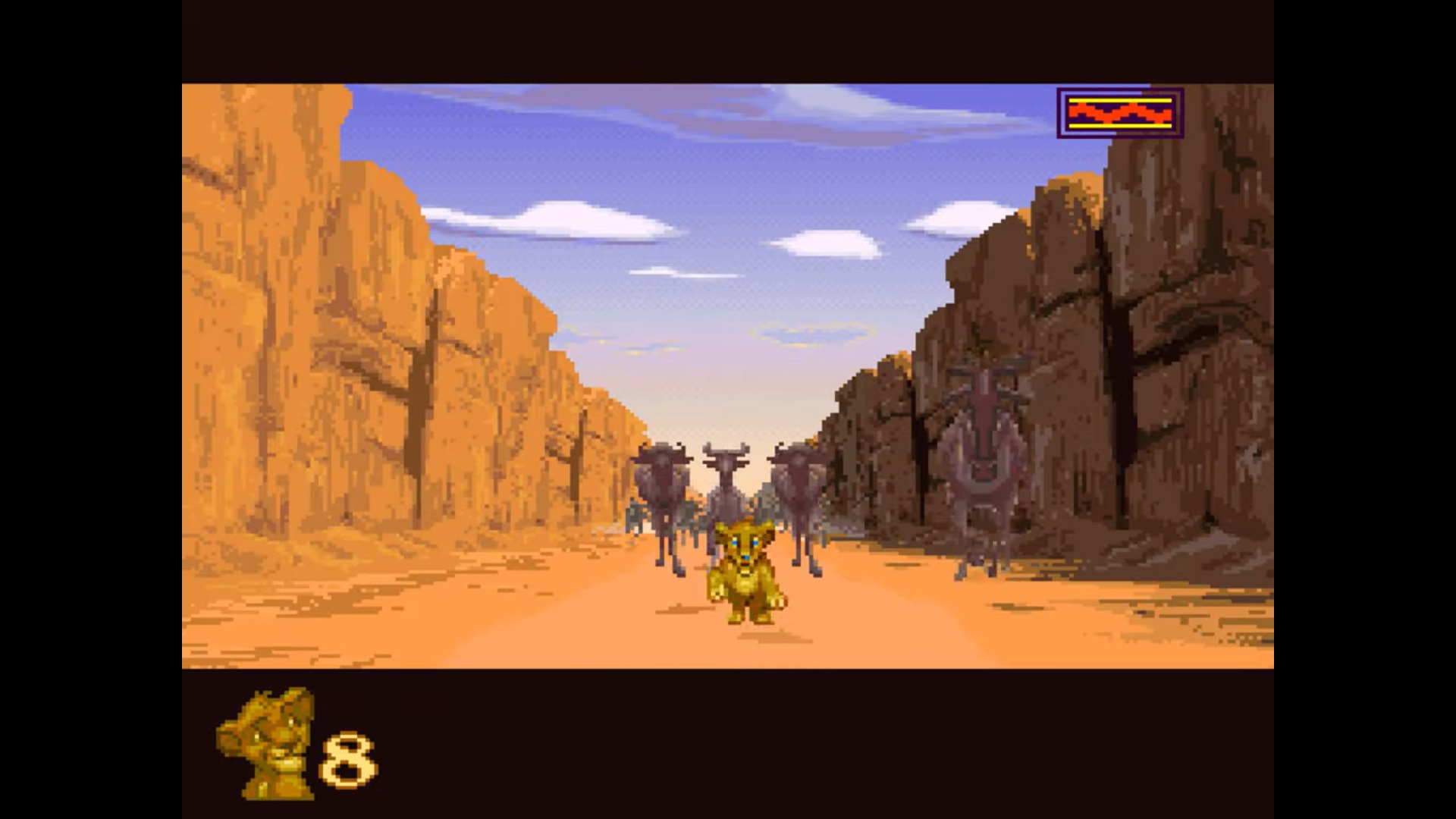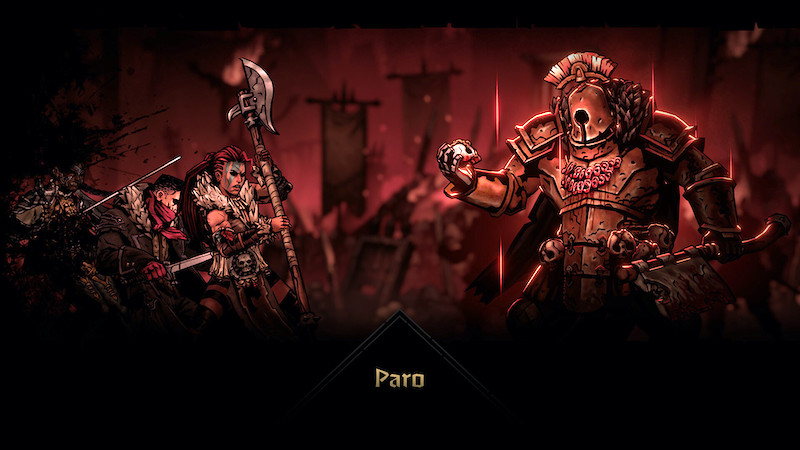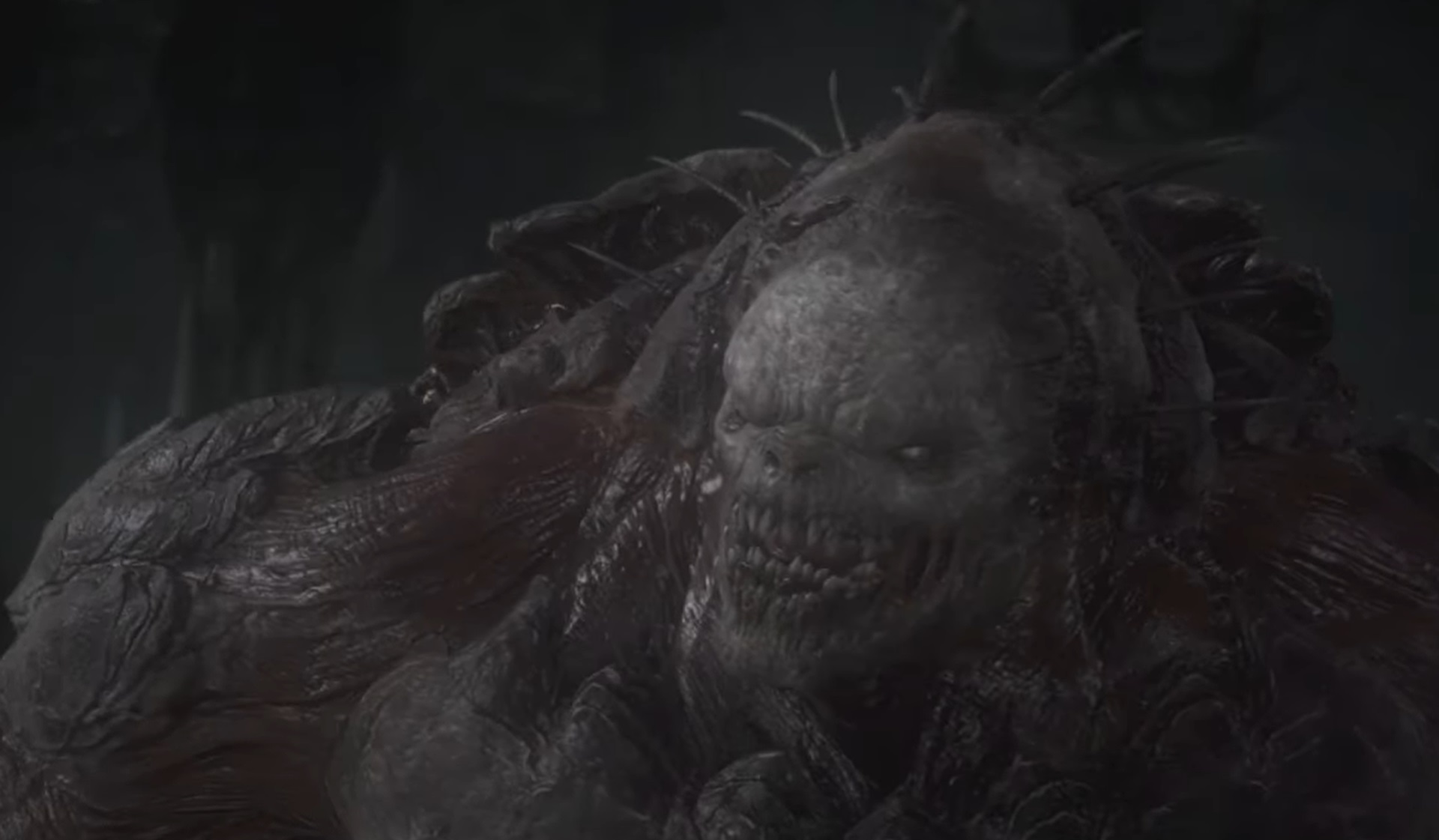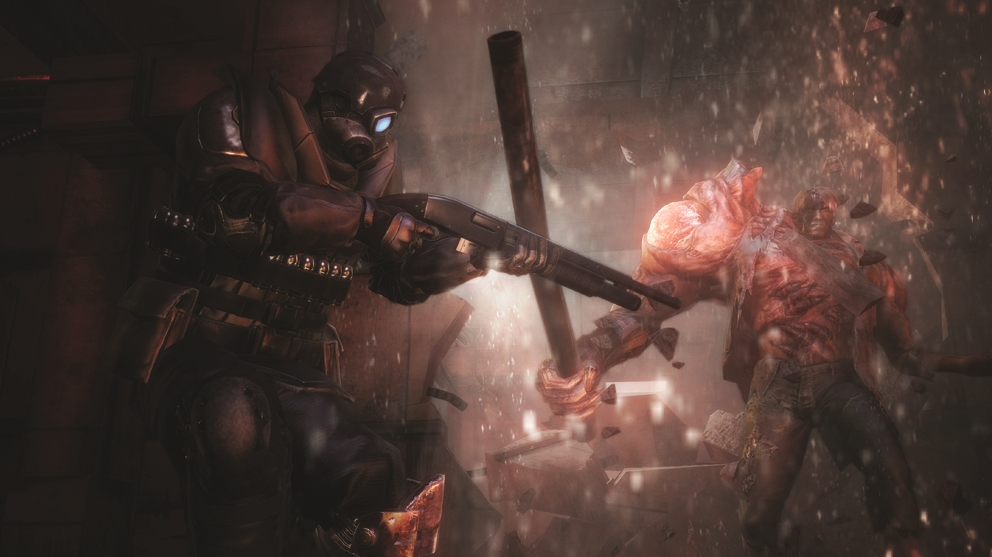
The Lion King’s Stampede Stage Makes for a Terrifying Chase
The Stampede stage in The Lion King is one of the most terrifying sequences on the console. Pitting Simba, our young lion cub protagonist, against dozens of charging wildebeests, you have to keep moving around to avoid being trampled. A few mistakes are all it’ll take to see you crushed. It’s an intense sequence thanks to the framing, mechanics, and effects within the scene, drawing some impressive terror out of a “kids’” game. Can’t wait to be king? Maybe if you don’t get squashed first.
There are a whole lot of great design decisions that all went into this one level to make it so effective. For instance, it plays out from a strange view for a sidescroller. Instead of playing out in a stage that runs side-to-side, you find yourself facing Simba as he runs from the stampede toward the screen. You’re looking behind him as he runs at you.
I love this viewpoint because it lets you see the oncoming wildebeests for the duration of the stage. This adds a lot of pressure as you watch that massive herd of animals rushing towards you. It also gives you a great view of the absolute terror on Simba’s face. Between those two simple things, it loans a lot of emotional weight to this stage in The Lion King. Also, having a young, vulnerable creature running toward you kind of kicks those protective instincts into gear. You know Simba needs saving. And you WANT to save him.

This viewpoint also lets us appreciate the threats that are hurtling our way. Looking back behind Simba, you can see separate wildebeests split off from the herd and make their way toward you. From a gameplay perspective, it’s neat because you get a good amount of time to parse which wildebeests are running faster than others so you know to move to the side to avoid them. If this was a sidescrolling sequence you’d only get the length of the screen to notice the incoming threat, gauge its speed, and move to avoid it. Here, you get to watch the visual creeping closing and move accordingly. You get more time to react.
As far as creating tension goes, it’s also terribly effective. Watching a wildebeest looming larger and larger as its sprite grows based on its distance to you, you get to appreciate how much bigger it is. You get to see how many of them are coming your way at once. You also have very little room to get away from them as you’re loosely gauging what large chunk of the screen they’ll take up when they are within range to run you over. You’re just scrambling to get out of the way in hopes to get to the next stage of The Lion King.
The wildebeests run at different speeds as well, which adds some additional challenge while trying to keep from getting crushed. You have to continually adjust your positioning if something starts coming at you faster. When you’re gauging this, the game also starts throwing rocks in front of you to trip you up. You get a short blinking warning that a rock is in your path, so you have a little time to dodge. However, now you’re juggling things in front of you and behind you. You’re constantly on the move and constantly under assault.

It’s a lot to keep track of all at once. Especially so when the game starts throwing ‘?’ symbols at you, where you don’t know exactly where the rock will be. You have to try to get the timing right with a jump or hope that you get lucky. And again, a few simple mistakes will have you bouncing between hazards and pulverized under those hooves.
The Lion King uses a little screen shake to really drive that sense of weight and power home as well. It’s no question how much it will hurt to get trampled by the wildebeests because the whole game shakes when they draw near. Just as a wildebeest is about to jump off-screen because it had run past you, you get treated to this powerful screen shaking. The whole screen trembles from the impact of their hooves. As the number of running wildebeests increases, that shaking just never stops. You can almost feel the heavy rumbling of the stampede from that visual. That simple design decision alone makes me want to avoid the rampaging animals.
The Lion King’s sound design further strengthens that feeling. The music for the stage is intense, filled with this rushing energy that matches the pacing of the running animals. It drives that tension up, but more so, it’s the sound of hooves that make this level so effective. The whole time, you just hear these pounding hooves smashing against the ground. The music is almost drowned out by the sound as more and more wildebeests rush past. It’s almost overwhelming in its power as more and more of the creatures rush by. Or over top of you if you mess up.

You look back, seeing a herd of animals coming in a crushing torrent. Can’t tell what’s in front of you, having to run blindly away. You get to watch as the wildebeests creep closer. See them looming larger and larger as they close the distance. Feel the music pressing you while the sound of hooves fills your ears with promises of turning you into a bloody smear. You look into those terrified, child-like eyes as they beg you to save them. The stage is only a little bit longer than a minute, but it feels like the longest minute ever created for the console.
The Lion King dabbles in horror well throughout its duration. The Elephant Graveyard, a stage made of the bones of dead elephants that would fit right into a Castlevania title. The colorful ‘Roar at Monkeys’ stage where it seems like near-invisible things are out to kill you (it’s where my patience with this game usually ends). It’s during The Stampede where it really shines, though. Here, the game settles deep into the genre to create a sequence that will have your pulse racing and heart pounding. It crafts a masterful experience in fear.
At least this property is arguably FOR kids, this time.




